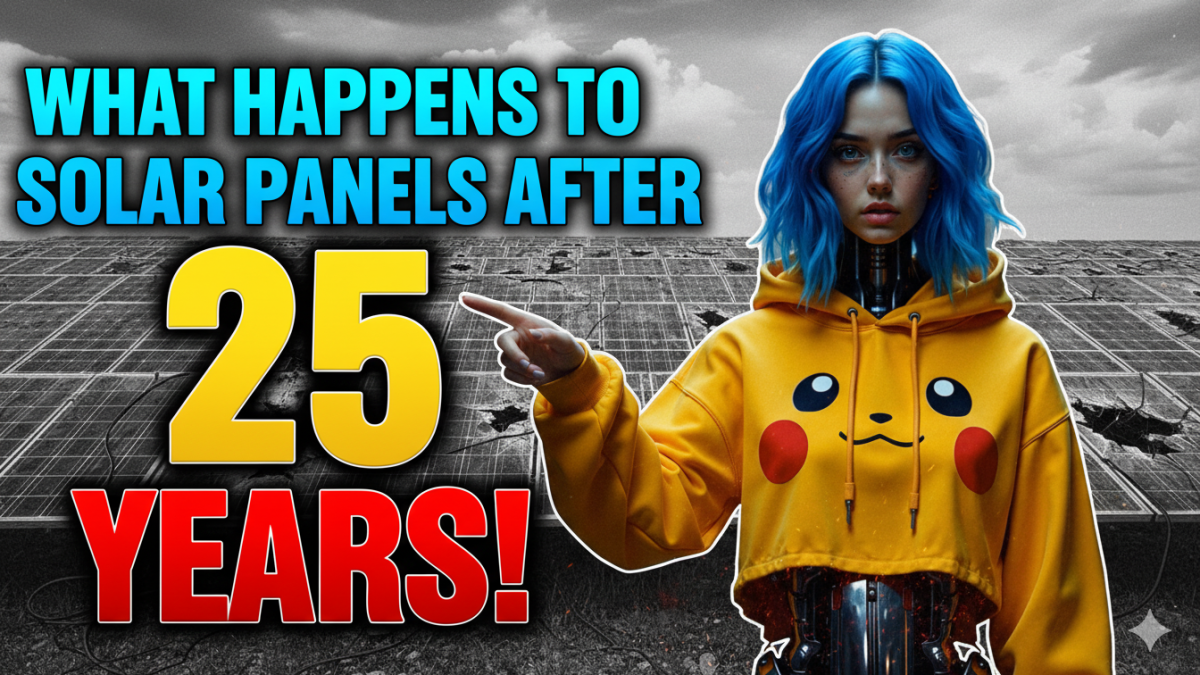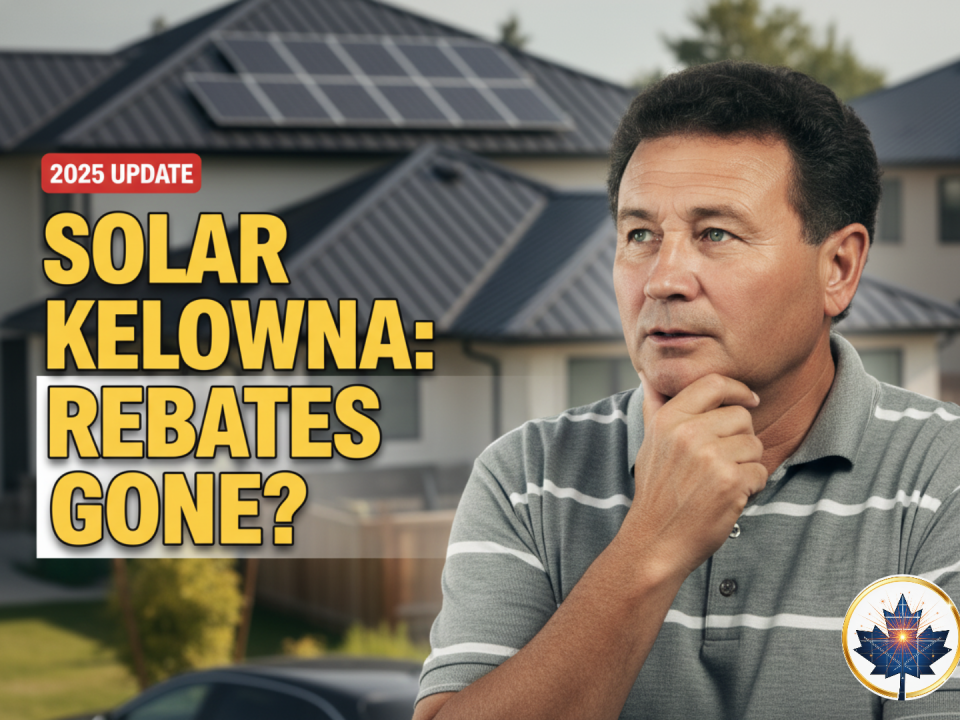
Free Solar Panels in Victoria, BC: Is It a Scam and How Does It Work?
October 1, 2025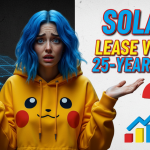
Leasing vs Buying Solar panels In Canada Practical Guide
October 3, 2025People often ask me what happens to solar panels after their 25-year warranty runs out. It’s a fair question. You’re making a big investment, and you want to know if it will pay off for the long haul. Many people think that at 25 years and one day, their panels become useless roof decorations. The reality is, they are just getting started on their second life, and that changes the financial math entirely.
A recent study from Switzerland looked at solar arrays that were over 30 years old and found they were still producing more than 80% of their original power. Let that sink in. These are panels from the late 80s and early 90s, built with technology that is ancient by today’s standards. Yet, they are still going strong.
This is a huge deal for us in Canada. It tells us that quality solar panels are not a 25-year product; they are a 30, 35, or even 40-year asset. This article will break down what you can realistically expect from your solar panels long after the warranty period ends, how the Canadian climate plays a role, and what you can do to keep your system running efficiently for decades.
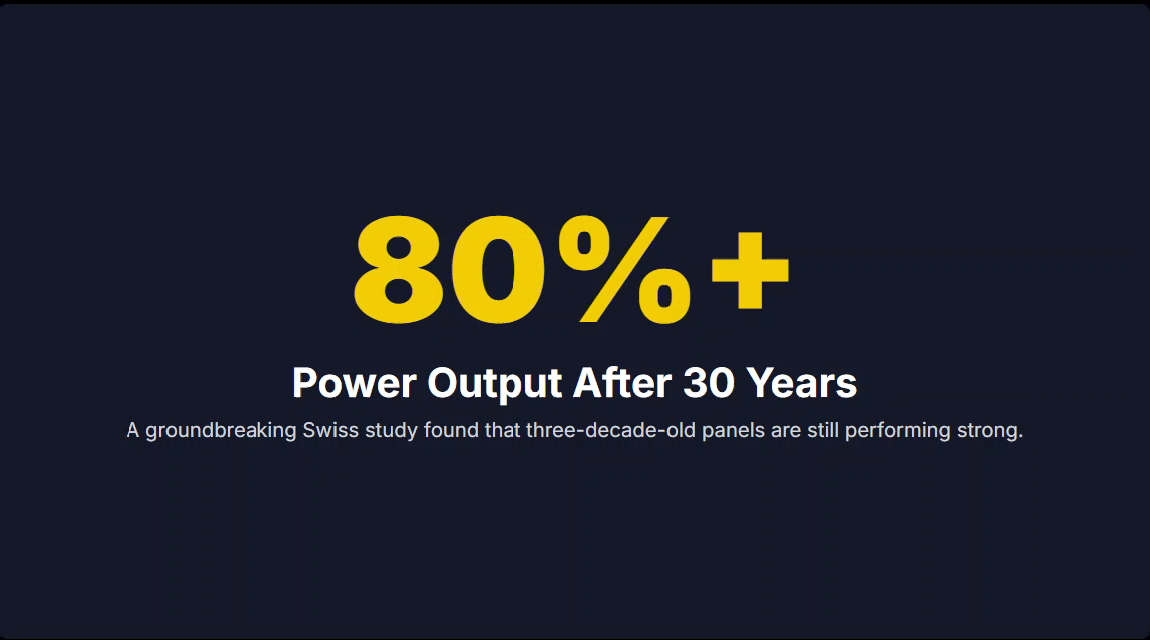
How Long Do Solar Panels Really Last in Canada?
The 25-year warranty that comes with most solar panels isn’t an expiration date. It’s a performance guarantee. The manufacturer is promising that in year 25, the panel will still produce a certain percentage of its original rated power, usually around 80-85%.
But what happens in year 26? The panel doesn’t just stop working. It continues to produce electricity, just at a slightly lower rate. The rate at which panels lose efficiency is called the degradation rate. For modern, high-quality panels, this rate is incredibly low.
A Groundbreaking Study Changes Everything
The game-changer is a Swiss study, highlighted by publications like Chemistry World. Researchers analyzed six different solar systems in Switzerland, some in the mountains and some at lower altitudes, that were installed between 1987 and 1993. Their findings were remarkable.
The average performance decline was just 0.24% per year. This is significantly better than the 0.5% to 1% degradation rate often cited for older panels. Ebrar Özkalay, the lead researcher, said, “This [data] really shows that photovoltaics can last [longer than expected], and it’s an important message to the photovoltaic industry.”
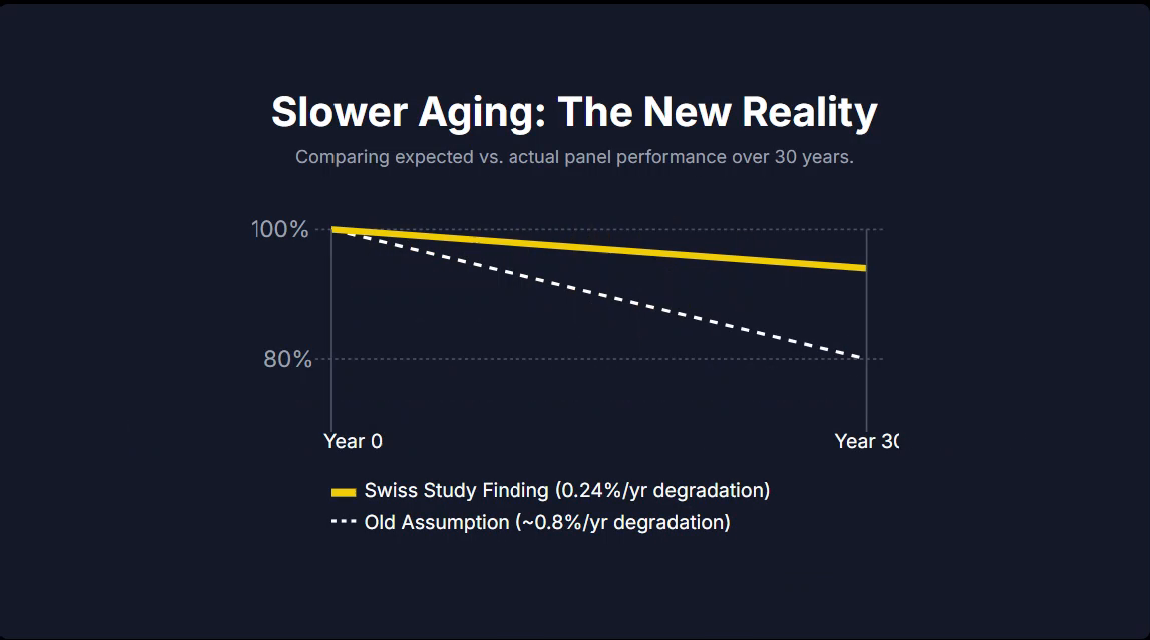
So, what does this mean for a Canadian homeowner? It means that if you invest in quality materials, your solar system is likely to outperform its warranty by a long shot. The study highlighted that the “bill of materials,” as U.S. expert Dirk Jordan put it, has a massive influence on how long panels last. The history of solar energy has seen rapid changes, but quality has always been key.
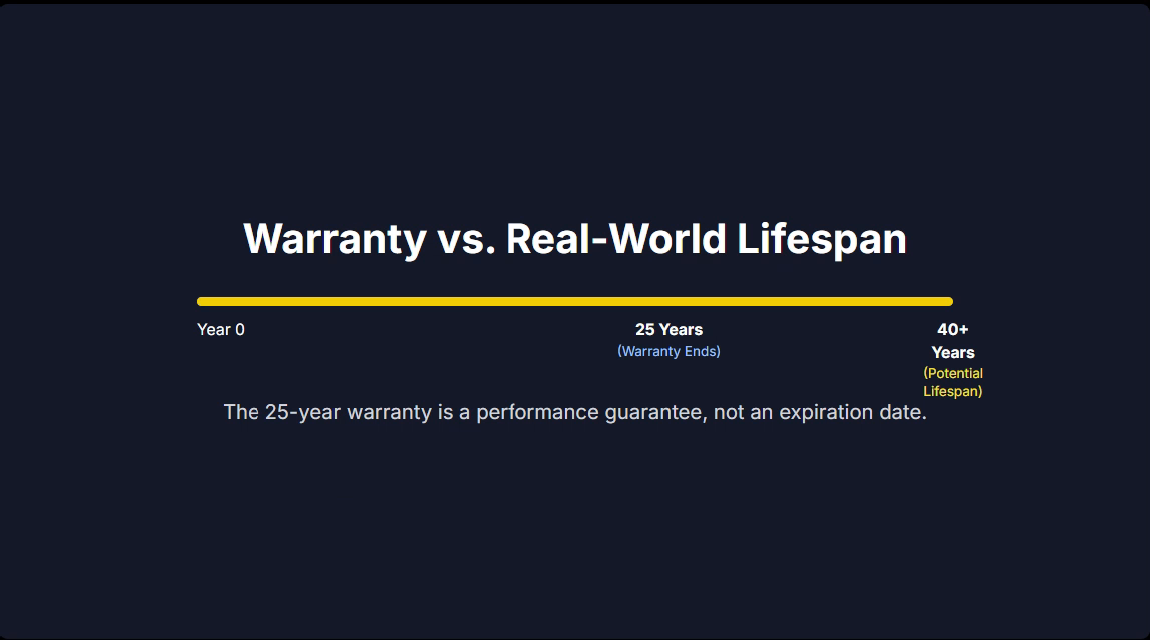
I remember visiting a client near Kingston, Ontario, who had a small system from the late 90s on his workshop. He was convinced it was time for a costly replacement. We ran a simple output test, and the panels were still hitting almost 90% of their original rating. He was shocked—and thrilled he could put that replacement money toward a new boat instead. It’s experiences like these, backed by new data, that show us the true longevity of this technology.
The Canadian Climate Challenge: Friend or Foe?
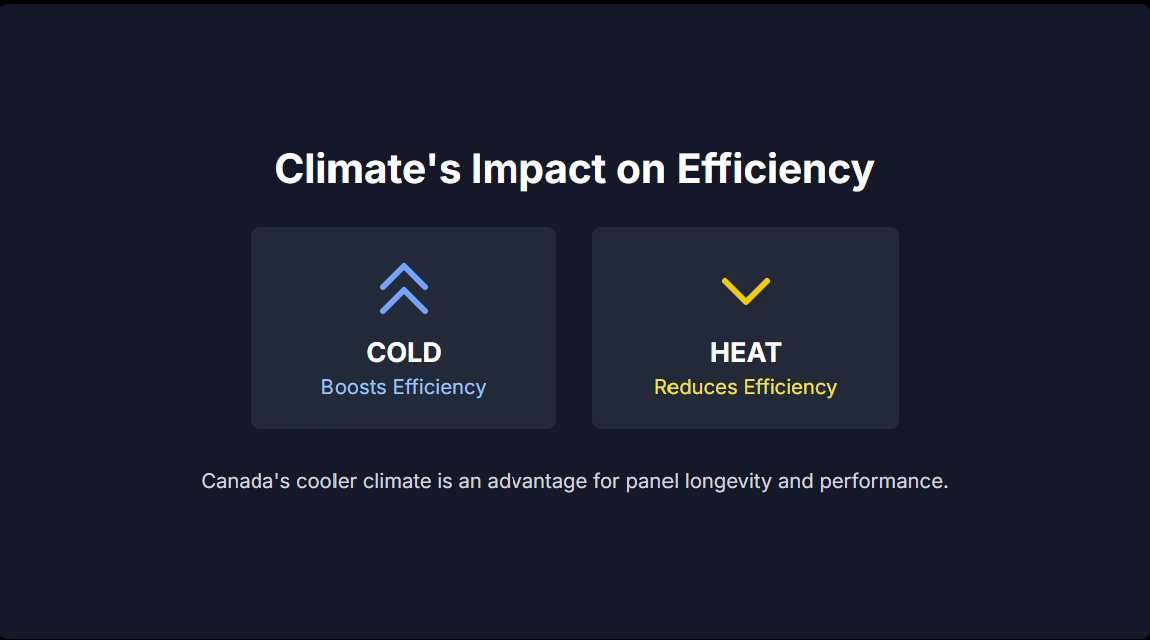
Canada’s weather is no joke. It’s one of the most common solar panel myths that our climate isn’t suitable. We have heavy snow, hail, and temperature swings that can go from -30°C to +30°C. It’s natural to wonder if solar panels can handle it for 25 or 30 years.
The answer is yes, if they are built for it. Here’s a breakdown:
- Snow Load: Modern solar panels are built with strong aluminum frames and tempered glass. They are rated to withstand significant weight. In fact, the dark surface of the panels often helps snow melt and slide off faster than it does from the rest of your roof.
- Hail: Panels undergo rigorous testing, including being shot with ice balls at high speeds to simulate hail. A quality panel can withstand hailstones up to an inch in diameter.
- Extreme Cold: Here’s something most people don’t know: solar panels are actually more efficient in the cold. Heat is the real enemy of efficiency. So, a crisp, sunny winter day in a place like Edmonton is perfect for solar production. The key challenge is the expansion and contraction of materials, but good manufacturing accounts for this thermal cycling.
The Swiss study found that panels at lower altitudes, where temperatures got hotter, degraded faster. This is another piece of evidence that Canada’s cooler climate can be an advantage for panel longevity, helping make many top Canadian cities prime for solar energy.
What Kinds of Panels Are Canadians Installing?
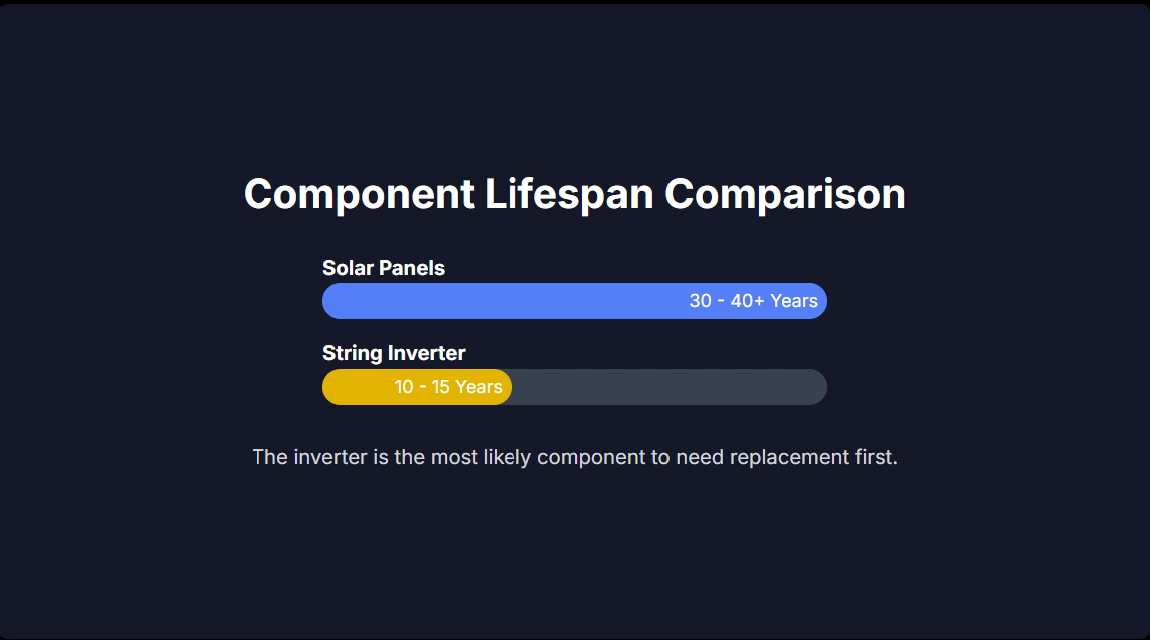
Most installations in Canada today, including those done by companies like Polaron, use monocrystalline PERC (Passivated Emitter and Rear Cell) panels. These are high-efficiency panels that perform well in low-light conditions, which is great for our shorter winter days.
Are they premium? I would classify them as high-quality, mainstream panels. They represent a sweet spot of performance, durability, and cost. They are among the best solar panels for residential use in Canada because they are built with the quality materials that the Swiss study identified as being crucial for a long life.
Tip for Homeowners: When you get a quote, ask about the specific panel model being proposed. Look up its spec sheet online. Pay attention to the temperature coefficient (how much efficiency is lost as it heats up) and the manufacturer’s warranty details. Knowing the right questions to ask a solar company is key.
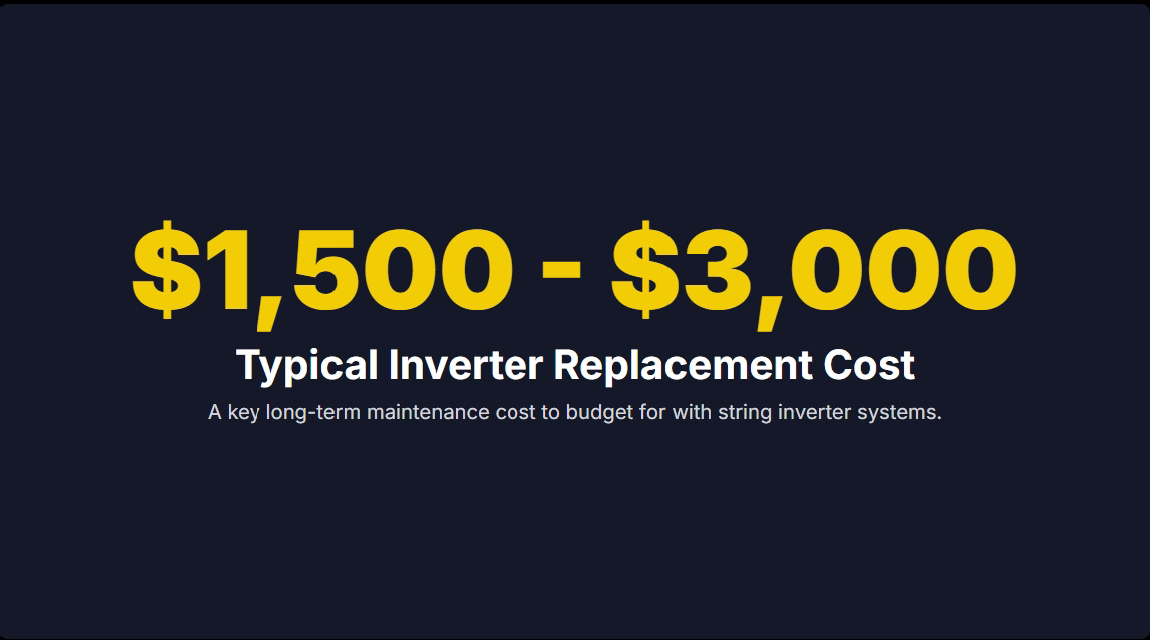
A Realistic Maintenance Plan for a 30+ Year Lifespan
Your solar panel system is a power plant. And just like any power plant, a little bit of upkeep goes a long way. Here is a practical timeline and what you should budget for.
| Time Period | Recommended Maintenance | Approximate Cost (CAD) |
|---|---|---|
| Years 1-10 | Annual visual inspection (from the ground). Clean panels only if they are extremely dirty (e.g., from nearby construction or heavy pollen). | DIY: $0. Professional Cleaning: $150 – $300 |
| Years 10-20 | Continue visual inspections. Have a professional check the inverter and electrical connections once during this period. String inverters may need replacement (average lifespan is 10-15 years). | Inverter Replacement: $1,500 – $3,000. System Check-up: $200 – $400. |
| Years 25+ | Your panels are out of warranty but still working. Monitor your system’s output. If you notice a significant drop, you might have an individual panel that has failed. | Panel Replacement: $300 – $600 per panel. |
The key takeaway here is that the inverter is the part of your system that will likely need attention first, not the panels. This is a critical detail. If your installer proposes microinverters (one per panel), their 25-year warranty aligns with your panels. If they propose a central ‘string’ inverter (one box for the whole system), you should budget for a replacement in 10-15 years. It’s a key difference in long-term cost.
Financing Your System as a Long-Term Asset

With panels lasting 30 years or more, the financial picture looks even better and helps answer the question of whether solar panels pay for themselves. However, the way you pay for it is changing.
The Canada Greener Homes Loan program has closed to new applicants. This was the best solar financing program Canada has ever had. Its closure means the window for an interest-free loan on your project is now shut. To learn more, read about what to do now that the Greener Homes Loan is gone.
After the federal loan program ended, what are your options?
- Installer Financing: Many companies, like Polaron, offer their own financing, some with 0% interest options. These are structured like personal loans. You make fixed monthly payments, and the idea is that your electricity savings offset, or even exceed, your monthly payment.
- Home Equity Line of Credit (HELOC): You can use the equity in your home to finance the system. The interest rates are typically lower than unsecured loans, but they aren’t zero.
- Provincial Programs: Some provinces, like those covered in our guide to solar panels in Nova Scotia, may still have their own grants or incentives. It’s essential to check your specific provincial government’s website for the latest details, as programs can change quickly, like when the P.E.I. solar rebate program closed.
Tip for Structuring the Deal: When looking at installer financing, ask for a clear breakdown of the total cost, the interest rate (if any), and the loan term. Compare this with what you could get from your own bank. A 0% loan is great, but make sure the complete solar system price hasn’t been inflated to cover the financing costs.
What Happens After 25 Years? Your Options When the Warranty Ends
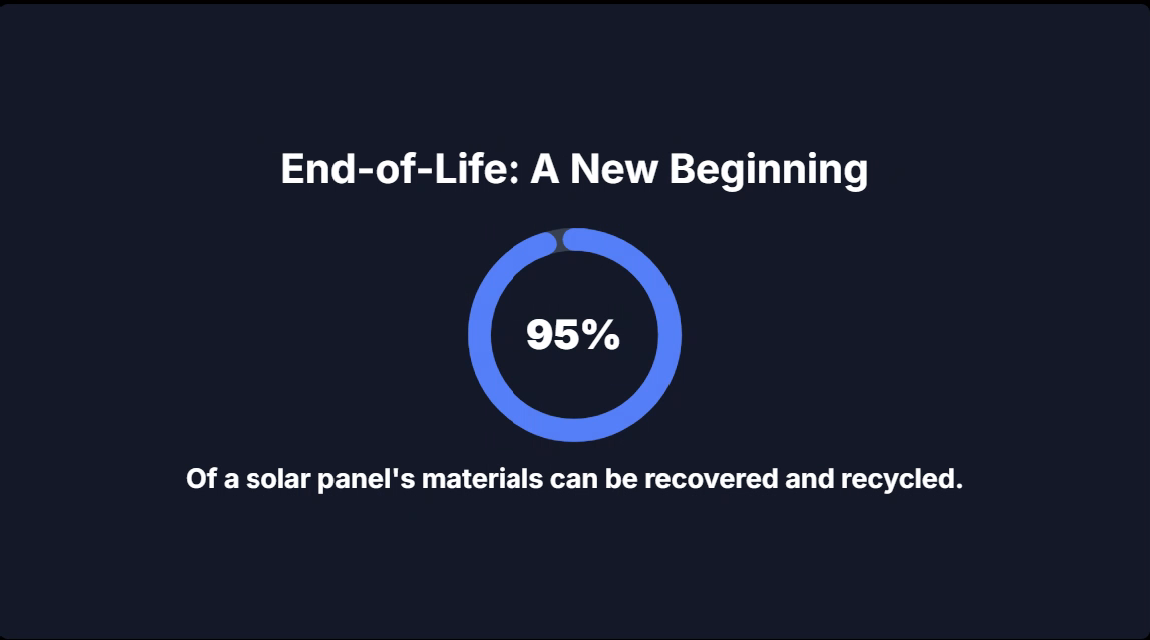
So, you’ve reached the 25-year mark. Your solar panels have officially outlasted their performance warranty. They’ve generated clean power for a quarter of a century, and your system has likely paid for itself several times over. What now? Do you need to budget for a full replacement?
Absolutely not. This is a milestone, not an endpoint. I explore this topic in detail in another article, “Solar Panels After 25 Years In Canada”, but here is the summary. Your panels are still valuable assets. Based on the data we have, they are likely still producing at 80-85% of their original capacity, and they could continue doing so for another 10-15 years.
Here are your practical options at year 25:
- Do Nothing: This is the most popular and often the smartest choice. Your system is still saving you money every single day. Keep it running and enjoy the free electricity. Continue monitoring its performance, but there’s no need to replace something that’s still working well.
- Upgrade Strategically: Take a look at your energy needs. Have you bought an electric vehicle? Installed a heat pump? If your electricity consumption has gone up, you could add a few new, higher-efficiency panels to your existing array to meet the new demand. You don’t necessarily need to replace the whole system.
- Plan for eventual recycling: While your panels have life left in them, year 25 is a good time to understand the recycling process for when they are truly done. We can’t just throw old panels in the landfill. The good news is, we don’t have to.
The Solar Panel Recycling Process
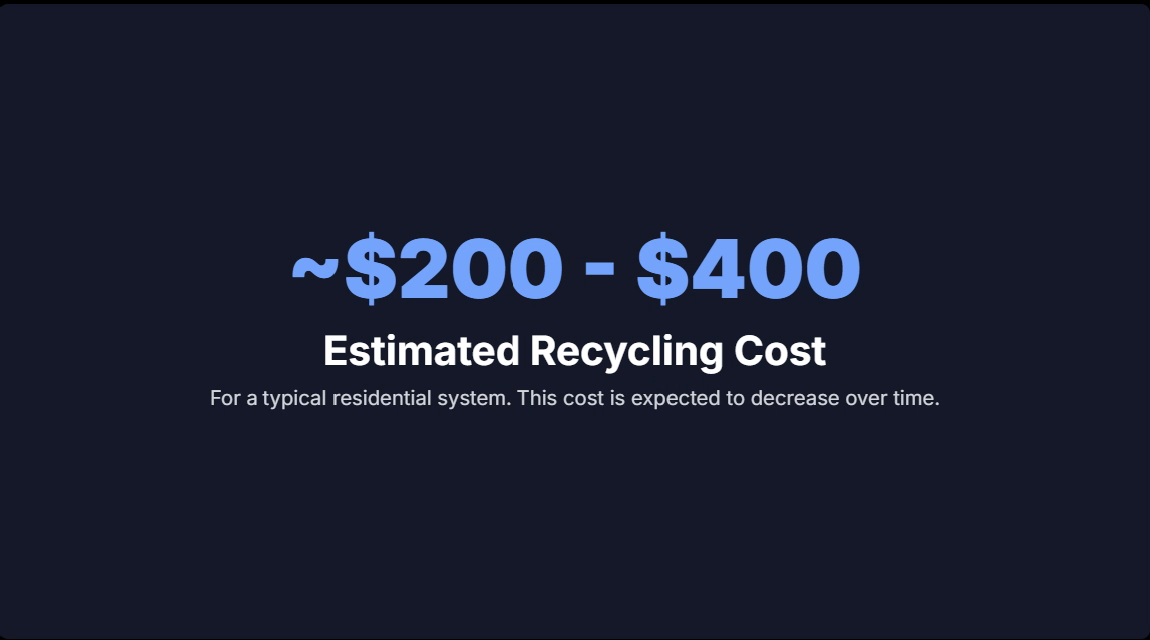
A solar panel is mostly glass and an aluminum frame. These are easy to recycle. The more complex part is separating the silicon, copper, and silver inside. Specialized facilities do this through thermal, chemical, and mechanical processes.
In Canada, the industry is gearing up for the first wave of panels to reach their end-of-life. Companies like Solar Cycle (who also operate in North America) and initiatives by organizations like the Alberta Recycling Management Authority are creating pathways to handle this. Over 95% of the materials in a solar panel can be recovered and reused to make new panels or other products.
The cost to recycle is still a factor, often a few hundred dollars for a residential system, but this is expected to decrease as the volume of retiring panels grows and the value of the recovered materials increases. This is a far better alternative to the environmental cost of a landfill.
Your panels have served their purpose, generated clean energy for decades, and now their components will get a second life. That is the circular economy we should all be striving for. It’s the responsible end to a powerful story.

